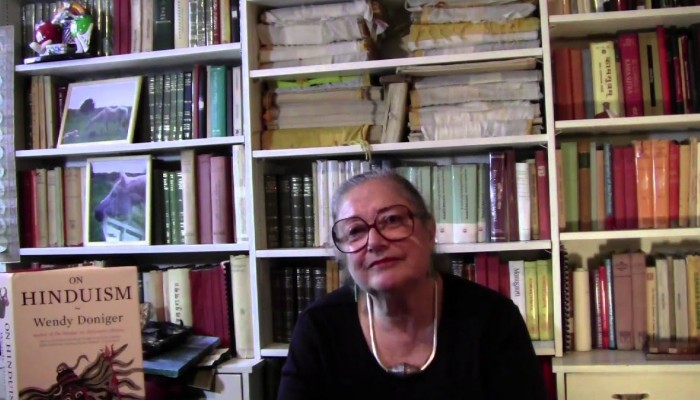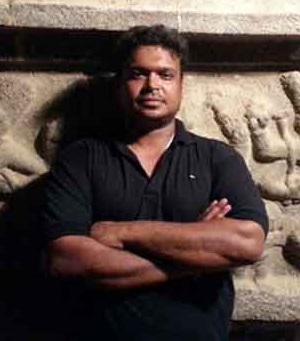A 'Scholarly' Purchase of a Vijayanagara Bronze- The curious case of Wendy Doniger
- In History & Culture
- 06:20 AM, Dec 07, 2018
- Vijay Kumar
Between 1963 and 1964 a reputed scholar visits India to learn Sanskrit on a grant. In order to be factually correct I quote the passage from her work – A Life of Learning – Wendy Doniger as part of the Charles Homer Haskins Prize lecture for 2015.
“ When I went on to graduate school at Harvard, my life as a Sanskritist floated on in its tiny, unstructured paradise: no PhD qualifying exams, no need to fill out long application forms for grants; the relatively few people who applied to go to India were more or less automatically financed. (The jaws of my students drop when I tell them about all this.)”
She goes on to say this
“ And all of it, including my round-trip airfare from New York, on $6,000 from the American Institute of Indian Studies, with money left over to buy the complete critical editions of the Mahabharata, the Ramayana, the Rig Veda, every Purana that had ever been published, and a three-foot high solid bronze statue of the goddess Parvati, from the Vijayanagar period.”
When I read this for the first time, I was stunned beyond words – having spent over a decade combatting illicit trafficking of Indian Antiquities I had stumbled upon many expert scholars including some Padma awardees indulging in what I hope are impulse purchase of Indian Antiquities without proper provenance or licit export in overseas galleries from what appears to be a whole host of shady dealers. I also know that many of them earned a nice commission from the same dealers authenticating and writing flowery catalogues for the same accursed network.
Don’t get me wrong, writing catalogues and authenticated artefacts is not wrong per se but for accredited scholars to overlook basic red flags on the items, deliberately ignoring these and not escalating it to the custodians is a cardinal sin and goes against the very morals of being an academic / archaeologist/historian as the world is seeing how the illicit trade in antiquities diminishes the objects to show piece curios from the Gods that they once were, more so destroying the context of their find and robbing future generations of any meaningful research arising out of a proper find.
We have many cases of innocent buyers (including the latest Hobby Lobby case in America) claim to innocently buy antiquities without knowing the larger implications. However, in this case we have we have a scholar who has read deep into history and our puranas – who I presume knows what these sacred bronzes were created for – to be a tirumeni’s or body of God and for her to brag about such a purchase is shocking to say the least. That too of money saved from an academic grant!
Now to the real problem with this purchase. Is it in contravention of the laws?
Quite often the art world is misled into thinking the 1970 UN Convention on the Means of Prohibiting and Preventing the Illicit Import, Export and Transfer of Ownership of Cultural Property passed in Paris on 14 November 1970 as a sort of holy grail and any purchase before that as somehow washed clean. Sorry, but it isn’t. The UN convention is exactly that – a convention that eases the member states that adopt it to follow a much easier process. But that doesn’t mean that it wipes the slate clean for past actions. More so when member states have had their own National laws in place.
What laws did India have in place then?
The Antiquities and Art Treasures Act, 1972 is read in addition to, and not in derogation of, the provisions of the Ancient Monuments Preservation Act, 1904 or the Ancient Monuments and Archaeological Sites and Remains Act, 1958 or any other law for the time being in force and India had the Indian Treasure Trove Act of 1878. Further India had another Act – the now almost forgotten
The Antiquities (Export Control) Act, 1947 - Act No. 31 of 1947, Passed by the Indian Legislature (Received the assent of the Governor General on the 18th April, 1947) – it’s exactly that - An Act to control the export of antiquities
And I now quote from the same bare act
1. Short title and extent. - (1) This Act may be called the Antiquities (Export Control) Act, 1947.
(2) It extends to the whole of British India.
2. Interpretation. - In this Act, unless there is anything repugnant in the subject or context,-
(a) "Antiquity" includes-
(i) any coin, sculpture, manuscript, epigraph, or other work of art or craftsmanship,
(ii) any article, object or thing detached from a building or cave,
(iii) any article, object or thing illustrative of science, art, craft literature, religion, customs, morals or politics in bygone ages,
(iv) any article, object or thing declared by the Central Government by notification in the Official Gazette to be an antiquity for the purposes of this Act,-
which has been in existence for not less than one hundred years;
(b) "export" means export from British India by sea, land or air.
3. Prohibition of export. - No person shall export any antiquity except under the authority of a licence granted by the Central Government.
4. Application of Act VIII of 1878. - All antiquities the export of which is prohibited under section 3 shall be deemed to be goods of which the export has been prohibited under section 19 of the Sea Customs Act, 1878, and all the provisions of that Act shall have effect accordingly, except that, the provisions of section 183 of that Act notwithstanding, any confiscation authorized under that Act shall be made, unless the Central Government, on application to it in such behalf, otherwise directs.
5. Penalty and procedure. - (1) If any person exports or attempts to export an antiquity in contravention of section 3, he shall, without prejudice to any confiscation or penalty to which he may be liable under provisions of the Sea Customs Act, 1878 (VIII of 1878) as applied by section 4, be punishable with imprisonment for a term which may extend to one month, or with fine which may extend to five thousand rupees, or with both
6. Power to determine whether or not an article is an antiquity. - If any question arises whether any article; object or thing is not an antiquity for the purposes of this Act, it shall be referred to the Director General of Archaeology in India, and his decision thereon shall be final.
And now how do we ascertain the object is antiquity or not. By the scholars own admission the 3 foot solid bronze standing Parvati belongs to the Vijayanagara period. The Vijayanagara Empire was established in 1336 by Harihara I and his brother Bukka Raya I of Sangama Dynasty and lasted till King Sriranga III 1678 CE as the last ruler.
As seen from reading the act above anything over 100 years old comes under the purview of the Act is not allowed for export within a licence from the Government.
Since the act mentions the Customs act of 1878 and the said event happened in 1963 -64 we need to see the relevant sections of the Customs Act of 1962 ( No.52 of 1962) and It extends to the whole of India. CHAPTER IVB, deals with PREVENTION OR DETECTION OF ILLEGAL EXPORT OF GOODS
11H. Definitions. - In this Chapter, unless the context otherwise requires, -
- "Illegal export" means the export of any goods in contravention of the provisions of this Act or any other law for the time being in force.
So unless the three-foot high solid bronze statue of the goddess Parvati, from the Vijayanagar period is still in India, the scholar is allegedly guilty of a crime by Indian Law and is duty bound to return the bronze to India.
Picture Credits: https://www.youtube.com/watch?v=how-wI-Gxj4 (No copyright infringement intended)







Comments